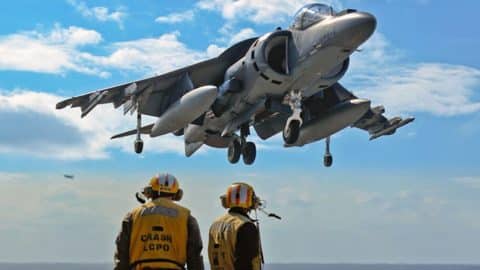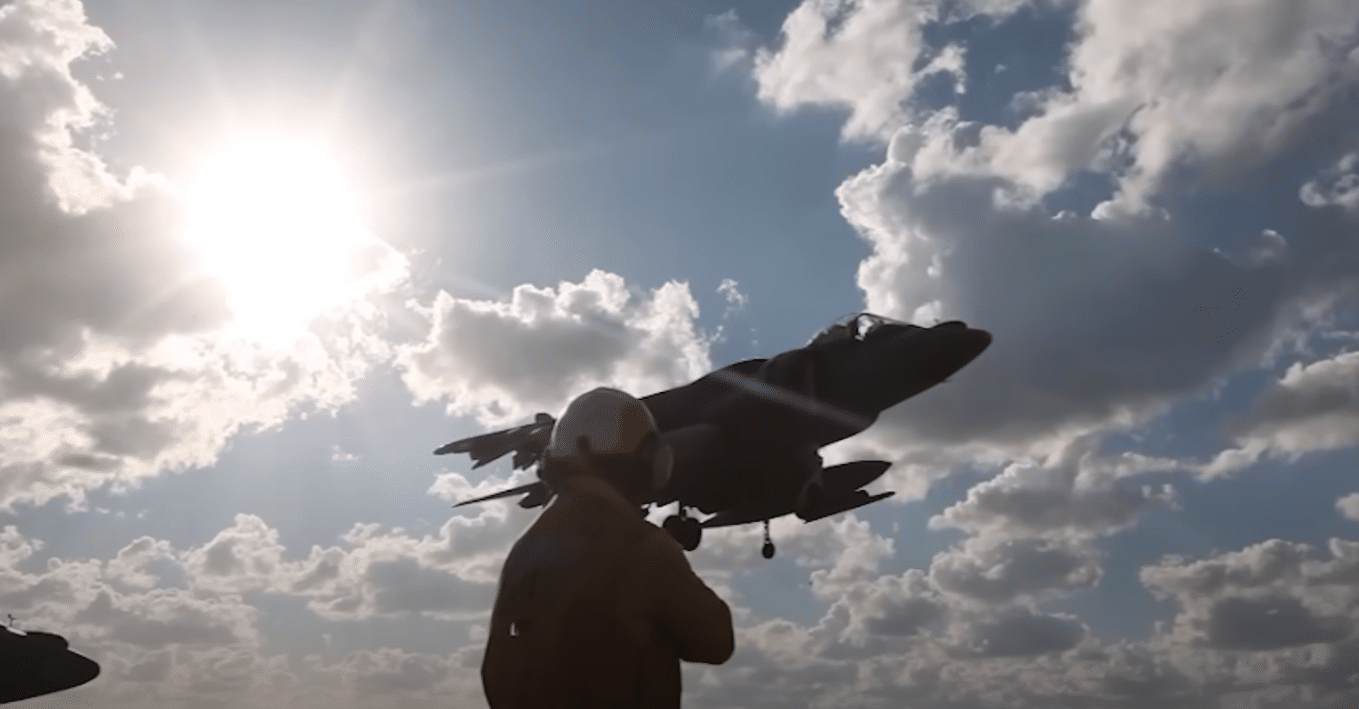
YouTube / Dark Skies
Looking back, the British Harrier jet can be considered ahead of its time. The Harrier was unique in that it could take off from short runways, aircraft carriers, and even makeshift landing zones. Having such capabilities were highly sought after at the time.
But like any other technology, age would soon become a factor for the mighty Harrier. With the 1980s closing in, it was clear that the Harrier design was about to face obsolescence.

Knowing this certainty, the US Marine Corps decided to team up with British Aerospace and McDonnell Douglas to save the aging aircraft by modernizing it.
The stage was set for the emergence of Harrier II. The project began in 1973, seeking to improve the Harrier’s payload capacity and range using the new and improved Pegasus 15 engine.

However, by 1975, the British government withdrew from the project, stating funding constraints and a limited RAF requirement for only 60 aircraft. Soon after, the US would also withdraw as they were unwilling to fund the entire project.
Regardless, the two companies were adamant about the project. By 1976, the US Department of Defense authorized resuming the development efforts for the Harrier II.
McDonnell Douglas modified two AV-8As, leading to the YAV-8B prototype, which flew for the first time in November 1978. Flight tests revealed more drag than expected, though its payload capacity, range, and V/STOL capabilities were all in the green.

A development contract was offered in 1979, along with the procurement of 12 aircraft. But with the Harrier II’s flight tests continuing to trend positively, it only took a matter of time before the US ordered 324 more. The program would get another boost when British Aerospace re-entered the project as a subcontractor in 1981.
Four full-scale development aircraft were constructed, with the first taking its maiden flight on November 5, 1981.
The AV-8B II proved to be a pretty remarkable subsonic attack aircraft. Its Pegasus turbofan engine featured two intakes and four synchronized vectored nozzles, giving it its vertical takeoff and landing capabilities.
The Harrier II also had a centerline fuselage and six wing hardpoints, making it capable of carrying 9,200 lbs of missiles and bombs. It also had an internal fuel capacity of 7,500 lbs, could be refueled midair, achieved a ferry range of 2,100 miles, and a combat radius of 300 nautical miles.

Changes in its airframe included a raised cockpit, a one-piece supercritical wing, and extensive use of carbon-fiber composite materials. The cockpit also had a sizeable cathode-ray tube multipurpose display with hands-on-throttle-and-stick controls, making it significantly easier to operate than its predecessor.